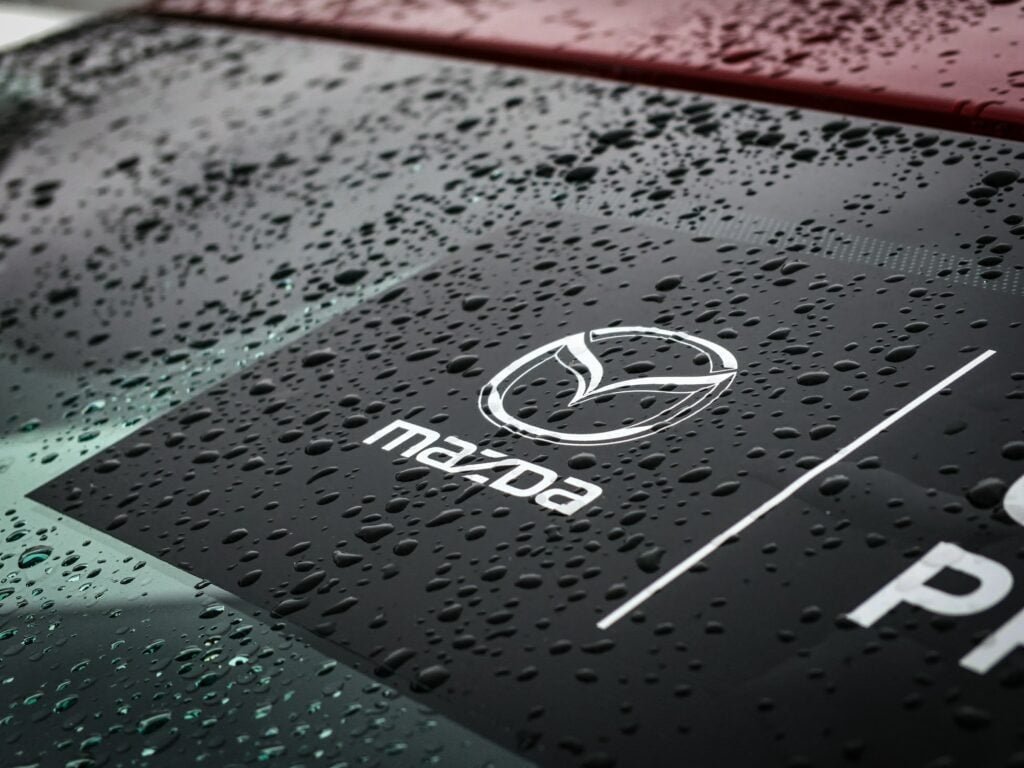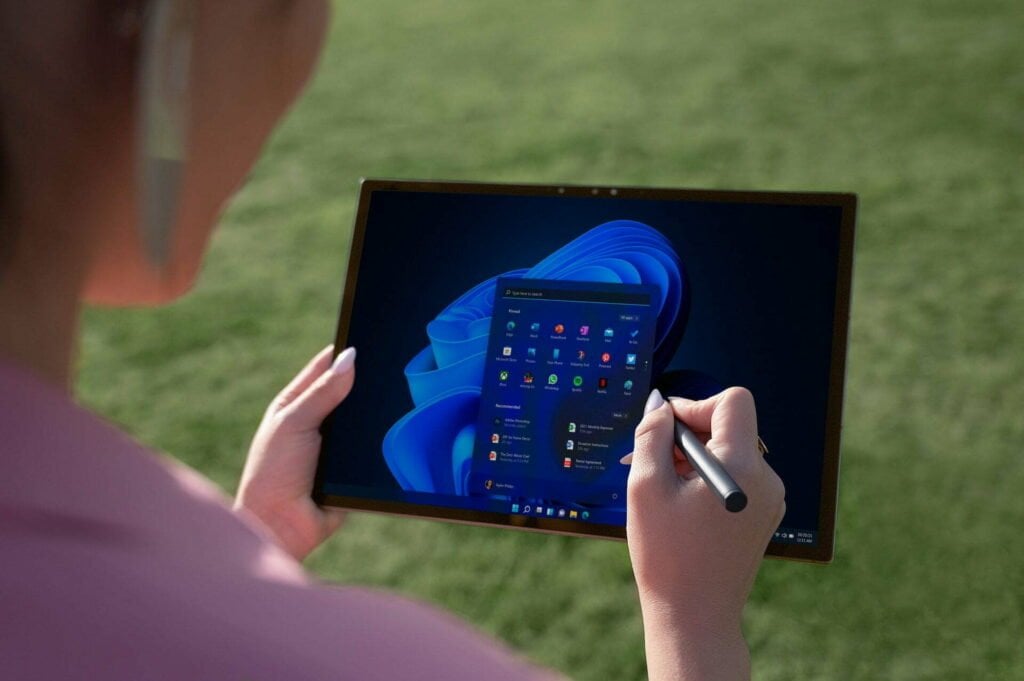

What is Skyactiv Technology: A Deep Dive into Mazda

As Seen On
Imagine cruising along a highway, the breeze gently nudging your hair, as your car purrs softly, consuming less fuel yet delivering impressive performance. It isn’t a scene from a futuristic movie but a reality made possible by Mazda’s revolutionary Skyactiv Technology.

What is Skyactiv Technology?
Skyactiv is not just a technology; it’s a philosophy, a commitment to enhancing driving pleasure while reducing environmental impact. It represents Mazda’s innovative approach to automotive design, focusing on engine efficiency, transmission, body, and chassis. At its core, Skyactiv embodies Mazda’s belief that excellent fuel efficiency and exhilarating driving dynamics should coexist harmoniously.
But now let’s figure out what is skyactiv technology on a deeper level:
The Heart of Skyactiv: The Engines
At the heart of Skyactiv technology lies its engines, notably the Skyactiv-G. This series of engines, available in 2.0L, 2.5L, and even larger sizes, pushes the limits of internal combustion. Unlike traditional engines that convert about 30% of fuel energy into mechanical power, Skyactiv-G engines boast higher compression ratios. It means they squeeze more energy out of every fuel drop, enhancing efficiency and power. The result? A delightful cocktail of better fuel economy and sprightlier performance.
Whisper of Innovation: The Transmissions
The Skyactiv-Drive transmission by Mazda is an innovative blend of several transmission types, aiming to provide an optimum balance between fuel economy and driving enjoyment. It combines conventional automatic transmissions, continuously variable transmissions (CVTs), and dual-clutch transmissions. This unique combination results in a transmission that offers smooth gear shifts and sporty acceleration, much like the responsiveness and directness you might expect from a manual transmission.
The essence of Skyactiv-Drive lies in its ability to adapt to the advantages of different transmission types. It provides the smoothness and ease of use in traditional automatic transmissions while incorporating the direct pedal response and efficient power delivery characteristic of CVTs and dual-clutch systems.
This synergy results in a transmission that enhances fuel economy and delivers a dynamic and enjoyable driving experience.
Mazda has implemented the Skyactiv-Drive transmission across various models, including the Mazda2, Mazda3, Mazda6, CX-3, CX-5, and CX-9. Each model benefits from this transmission’s unique efficiency and driving pleasure blend.
In contrast, the Skyactiv-MT, Mazda’s manual transmission offering, is tailored to provide a crisp and engaging shifting experience akin to a sports car. Its design simplifies internal mechanisms and focuses on reducing friction, which translates to responsive, sporty handling and improved fuel efficiency.
The Skyactiv-MT is available in models such as the MX-5, Mazda2, Mazda3, CX-3, and CX-5, catering to drivers prefer a more hands-on and tactile driving experience.
Together, these transmissions reflect Mazda’s commitment to driving enjoyment without sacrificing efficiency, a core aspect of the Skyactiv philosophy.
The Skeleton: Body and Chassis
The Skyactiv philosophy extends to the body and chassis of Mazda vehicles, emphasizing a balance between lightness and rigidity, agility, and stability. Let’s delve deeper into these innovative features.
Skyactiv-Body: A Blend of Rigidity and Lightness
The Skyactiv-Body in Mazda vehicles showcases a remarkable combination of high rigidity and reduced weight. It’s about 8% lighter and 30% more rigid than previous models. This exceptional rigidity is crucial for delivering Mazda’s fun-to-drive feel, while the lightweight nature contributes to outstanding crash safety performance.
The Engineering Behind the Body Structure
Mazda’s approach to the body structure involves revisiting basic principles. The framework’s concepts of ‘straightening’ and a ‘continuous framework’ ensure that force is dispersed widely throughout the entire structure rather than being concentrated in specific areas. This design philosophy results in a framework that can absorb impacts more effectively, contributing to safety and stability.
Underbody and Upperbody Framework
Mazda has minimized curves in the underbody to create a straighter frame, extending continuously from front to rear. Continuous bonding with the horizontal frame is implemented where curves are necessary, forming a closed section that reduces weight while maintaining rigidity. The upper body also plays a key role in this framework, with suspension mounting positions at both front and rear being directly bonded with the underbody, forming a dual brace structure.
Skyactiv-Chassis: Mastering Balance
The Skyactiv-Chassis is designed to achieve two primary goals: agility at low speeds and stability at high speeds. To accomplish this, Mazda has significantly reduced the chassis’s weight by about 14% compared to previous models. This reduction in weight doesn’t compromise the vehicle’s stability or handling; rather, it enhances the overall driving experience.
Resulting Benefits
Combining a lighter, more rigid body and an efficiently designed chassis translates into several tangible benefits for the driver. These include improved handling, enhanced safety, and a more connected driving experience. The agility at lower speeds makes for nimble city driving, while the stability at higher speeds instils confidence during highway cruising.

The Brain: Skyactiv-Vehicle Dynamics with G-Vectoring Control
Skyactiv-Vehicle Dynamics with G-Vectoring Control (GVC) is a groundbreaking technology developed by Mazda that enhances the driving experience by optimizing vehicle dynamics. This technology is rooted in Mazda’s human-centric development philosophy, focusing on the driver’s interaction with the vehicle to create a more intuitive and enjoyable driving experience.
The essence of GVC lies in its subtle yet effective approach to improving vehicle handling and stability. When you turn the steering wheel, GVC subtly adjusts the engine’s power output, shifting the vehicle’s weight. This shift helps optimize each tire’s load, ensuring that the car’s movements align more closely with your intentions as a driver.
The result is a smoother ride with less need for steering corrections, even those we do unconsciously. This system not only enhances the car’s responsiveness but also reduces the physical and mental fatigue experienced by the driver, making for a more comfortable and enjoyable drive.
Mazda’s approach with GVC is not just about mechanical adjustments; it’s about understanding and enhancing the relationship between the car and the driver. The technology considers human characteristics and behaviours, aiming to create a vehicle that feels like an extension of the driver’s body. It results in more precise steering and better control, particularly noticeable on wet or snowy roads.
The GVC is part of the larger Skyactiv-Vehicle Dynamics suite, designed to provide integrated control of the engine, transmission, chassis, and car body. This integration is key to achieving the Jinba Ittai feel – a sense of unity between the car and the driver. Mazda’s goal with these technologies is to improve vehicle specifications and enhance the overall driving experience, creating a stronger bond between the driver and their vehicle.
In summary, Skyactiv-Vehicle Dynamics with G-Vectoring Control is a testament to Mazda’s commitment to driving enjoyment, comfort, and safety. It exemplifies how advanced engineering can harmonize with human-centric design to create vehicles that are not just machines but partners in the driving experience.
Embracing the Sky: Models with Skyactiv Technology:
Mazda’s Skyactiv Technology, a hallmark of the brand’s commitment to efficiency and performance, is integrated across various models, each designed to offer a unique driving experience. Here’s an in-depth look at some of the key Mazda models featuring Skyactiv Technology:
- Mazda3 Sedan and Hatchback: These models are equipped with the Skyactiv-G 2.0L and 2.5L gasoline engines, known for their high compression ratios and fuel efficiency. The Mazda3 lineup, including the sedan and hatchback versions, offers a balance of performance and efficiency with impressive EPA-estimated MPG ratings.
- Mazda CX-90 PHEV: This model represents a blend of performance and eco-friendliness, showcasing Mazda’s commitment to sustainable driving without compromising the driving experience. The CX-90 PHEV is part of Mazda’s move towards more electrified options while still maintaining the core principles of Skyactiv Technology.
- Mazda MX-5 Miata and MX-5 Miata RF: These models are renowned for their driving dynamics and are a perfect example of Mazda’s engineering prowess. The MX-5 range, with Skyactiv Technology, delivers a thrilling driving experience, combining responsive transmissions with efficient engines.
- Mazda CX-9: A spacious 3-row SUV, the CX-9 is equipped with Skyactiv Technology, ensuring it delivers performance and efficiency without compromising its capability as a family vehicle. The CX-9 is a testament to Mazda’s ability to integrate Skyactiv Technology into larger vehicles without losing the essence of what makes driving enjoyable.
- Mazda CX-30: This compact SUV is another example of Skyactiv’s versatility. The CX-30 offers a standard AWD and an optional turbo, highlighting Mazda’s focus on providing a range of options for different driving preferences and needs.
- Mazda3 2.5 Turbo: The turbocharged variant of the Mazda3 is targeted at driving enthusiasts who prefer a more robust performance. It features the Skyactiv-G 2.5 Turbo engine, delivering substantial horsepower and torque, paired with a six-speed automatic transmission and standard i-Activ AWD.
These models represent a fraction of Mazda’s lineup that benefits from Skyactiv Technology. Across these vehicles, Mazda showcases its ability to harmonize fuel efficiency with driving pleasure, adhering to its philosophy of creating cars that deliver more performance, efficiency, and enjoyment.
This diverse range of models, equipped with Skyactiv Technology, illustrates Mazda’s commitment to innovative automotive engineering and sustainable driving solutions.
Frequently Asked Questions:
What makes Skyactiv engines different from traditional engines?
Skyactiv engines feature higher compression ratios, which means they make more efficient use of fuel, resulting in better fuel economy and performance.
Can I get a manual transmission with Skyactiv Technology?
Yes, Mazda offers the Skyactiv-MT, a six-speed manual transmission that provides an engaging and responsive driving experience.
Is Skyactiv Technology available in all Mazda models?
Many Mazda models, including the Mazda3, CX-9, and others, come equipped with various components of Skyactiv Technology.
A Technology that Touches the Sky
Ultimately, Skyactiv Technology is more than just a set of technical specifications. It’s Mazda’s vision of the future of driving—a future where cars are not just machines but companions on the road to a cleaner, more enjoyable driving experience. It’s a bold leap into the sky, reaching for the stars of automotive excellence.
Konger
Up until working with Casey, we had only had poor to mediocre experiences outsourcing work to agencies. Casey & the team at CJ&CO are the exception to the rule.
Communication was beyond great, his understanding of our vision was phenomenal, and instead of needing babysitting like the other agencies we worked with, he was not only completely dependable but also gave us sound suggestions on how to get better results, at the risk of us not needing him for the initial job we requested (absolute gem).
This has truly been the first time we worked with someone outside of our business that quickly grasped our vision, and that I could completely forget about and would still deliver above expectations.
I honestly can't wait to work in many more projects together!
Disclaimer
*The information this blog provides is for general informational purposes only and is not intended as financial or professional advice. The information may not reflect current developments and may be changed or updated without notice. Any opinions expressed on this blog are the author’s own and do not necessarily reflect the views of the author’s employer or any other organization. You should not act or rely on any information contained in this blog without first seeking the advice of a professional. No representation or warranty, express or implied, is made as to the accuracy or completeness of the information contained in this blog. The author and affiliated parties assume no liability for any errors or omissions.

